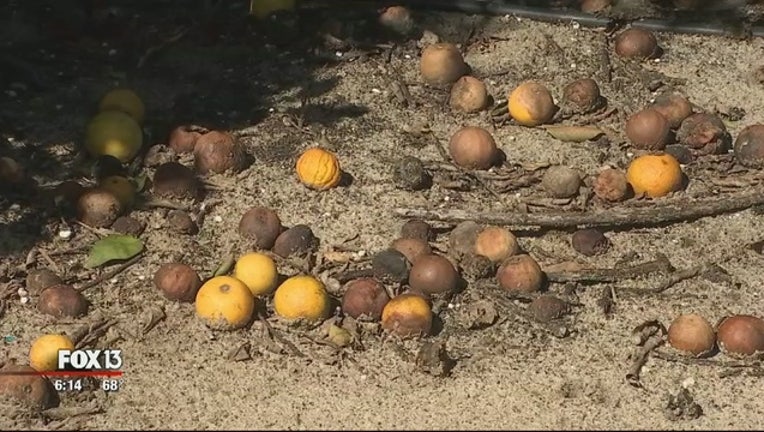Florida citrus growers end worst season in decades

TALLAHASSEE (NSF) - Florida’s citrus industry experienced its worst growing season since World War II as the hurricane-battered harvest is now essentially complete.
The latest forecast numbers from the U.S. Department of Agriculture show no change in the past month for orange production, which is off 34.7 percent from the prior growing season. Meanwhile, grapefruit production has fallen another 1.8 percent from a May forecast, coming in at half of what was picked in the prior growing season and at its lowest level in nearly a century.
“This brings a very difficult citrus season to a close,” Shannon Shepp, executive director of the Florida Department of Citrus, said in a prepared statement. “We look forward to a quiet, resilient season in the fall.”
Agriculture Commissioner Adam Putnam called the season, which included devastation from Hurricane Irma and continued battles with deadly citrus greening disease, “horrible.”
“It’s important to remember that the industry is still recovering from Hurricane Irma’s unprecedented damage last year,” Putnam said in a statement.
The season produced 44.95 million 90-pound boxes of oranges, 3.88 million similar-sized boxes of grapefruit and 750,000 boxes of specialty fruits, which include tangelos and tangerines.
A year ago, the industry which has struggled against development and for a decade against citrus greening, produced enough oranges, grapefruit and other fruits to fill a combined 78.23 million boxes, which itself was a 16.7 percent drop from the 2015-2016 season.
The combined 49.58 million boxes this year marks the lowest yield for growers since they filled 48.65 million boxes in the 1941-1942 season. By 1950, the industry was producing 100 million boxes a year.
A big factor in this year’s numbers was the impact of the powerful and deadly Irma, which devastated large portions of South Florida’s agricultural lands, wiping out up to 70 percent of some citrus groves as the season was getting underway.
For an industry that 20 years ago filled 304 million boxes, of which 244 million were oranges and 49.55 million were grapefruit, the harvest total was especially bitter.
Shepp noted that some private pre-season estimates had growers producing enough oranges to fill 75 million boxes.
With the waning production, the industry has seen its influence drop in terms of economic contributions to the state. A University of Florida study released last year found the industry’s direct and indirect economic impact of $8.6 billion was a decline of 31 percent over the preceding four years.
Meanwhile, with the threat of retaliatory trade tariffs from the European Union looming over the 12 million gallons of orange juice annually sent overseas, the industry continues to await federal help from Irma.
A post-storm estimated put agricultural damages in Florida at $2.5 billion, with citrus accounting for $761 million of those losses. State lawmakers later upped the estimate to more than $1 billion just for citrus, but no official estimate has been issued since October.
As part of a federal disaster-relief package approved by Congress in February, Florida is slated to get a share of $2.36 billion targeted for agricultural businesses impacted by hurricanes and wildfires.
The money, expected to provide a multi-year bridge as replacement trees and groves mature, includes $340 million that Florida will get in the form of a block grant to help citrus farmers rebuild. State lawmakers have pushed for the program to be opened early, but the aid has not yet started.
Putnam said in his release the “much-needed disaster assistance is on the way to help Florida’s growers.”
And while little change is expected, final harvest numbers for the season from the federal agriculture department will be released in July.

